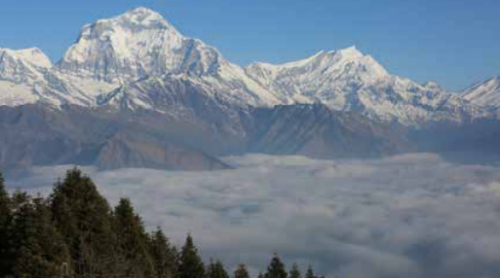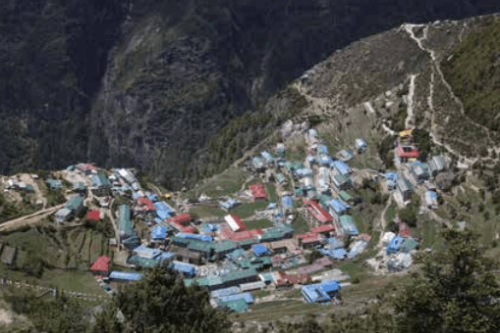
Mt. Qomolangma mired in "chaos", stricter regulations required
This climbing season for Mt. Qomolangma, or Mount Everest, has hit the headlines around the world for becoming the deadliest since 2015 with at least 11 people losing their lives. The growing fatalities indicate the need for stricter regulations.
Littered bodies
This year, climbers have spoken of "walking over bodies" to reach the peak of Mt. Qomolangma. The "traffic jam" triggered by the record number of climbers was widely blamed. Nine climbers lost their lives this year in the south face of the mountain (Nepal side), the most popular side for summit ascents, and two in the north face (China side).
The Nepali Department of Tourism issued a record number of 381 permits for 44 teams this climbing season, out of which 78 permits were for Indians, making India the country with the highest number of applicants. According to a code of practice in Nepal, a climber must scale a peak of at least 6,000 meters before climbing Mt. Qomolangma, but many inexperienced climbers can easily get permits due to mismanagement.
With these green hands taking more time to move ahead by a single rope fixed on a shape-edged slope amid strong wind, they are not just risking their own lives but also of others by forcing them to wait in extreme weather conditions.
Nima Nyamgel Sherpa, an expedition operator and doctor, advised that authorities should raise the standard for applicants from 6,000 meters to 8,000 meters, compelling them to prepare more before starting to climb the 8,848-meter peak, and therefore decreasing the number of novices who are blamed for the highest congestion this year.
Experts said that climbers are supposed to prepare a backup plan and to study the climb beforehand. Jeewan Shretha, an officer at Himalayan Database, an archive of mountaineering, shared the story of a certified international mountain guide who climbed several mountains around the world but failed at Mt. Qomolangma three consecutive times.
"He always suffered chest pain and could not go up beyond Camp 2. After medical checkups and rest, he was allowed to go back to climb, but he stayed back, concluding that the Himalayas are different from other mountains," Shrestha told Xinhua.
Meanwhile, Nima, who has been working with expeditions for nine years, said it is important for operating agencies to scrutinize their clients for their preparedness, physical stamina and mountaineering skills in order to conduct safe and secure expeditions.
Mohan Krishna Sapkota, Secretary at the Ministry of Culture, Tourism and Civil Aviation, told Xinhua that they were considering solutions including fixing more ropes in Hillary Step, a vertical rock face just a few hundred meters below the summit, which is the major point of bottleneck. Likewise, the government is trying to compel every climber to receive a health check-up at base camp before they leave for higher camps.
"Hidden killer"
Some have suggested that the short weather window was a major reason for the congestion, which, according to Temba Tsheri Sherpa, a recordholder and operator of expeditions, was incorrect. Instead, false forecast caused impatient climbers to throng into the same place in a short time. "The weather report was not accurate this time because it claimed there was a favorable window only for two days. But in fact, some climbers left a week later and the weather was still fine," the expedition operator told Xinhua.
Manjit Dhakal, a Nepali expert on climate change, said although weather forecast technology helps climbers scale mountains easier, climate change makes weather patterns more unpredictable. Rabindra Maharjan, who coordinated an expedition from the China side this year, said that nowadays nobody can depend on weather reports for such a trek.
"This time, I was following three satellite reports from India, Switzerland and the United States which had predicted perfect weather only for two days. Based on similar reports, most of the climbers pushed for the summit without giving it a second thought," said Maharjan. He warned that there is now more risk of glaciers retreating in the Himalaya area, which means higher possibility for disasters like floods, landslides and avalanches. Veteran Sherpas including Kami Rita Sherpa, who climbed Qomolangma a record number of 24 times, are worried that scaling Mt. Qomolangma in the future will be more complicated if global warming continues to affect the already fragile ecological system of the area.
Graveyard, junkyard

This year a 45-day clean-up campaign was carried out jointly by the Nepal government, the Nepal Army and other organizations, in a bid to rid the mountain of its stigma as "the highest graveyard and junkyard" in the world. During their expedition, a 12-member team collected four bodies on the slopes, which were kept invisible under ice. More than 100 bodies have yet to be discovered.
During this ambitious clean-up project for the southern side, which cost around 23 million rupees (nearly 20,000 U.S. dollars), about 10,800 kgs of garbage left by climbers was brought down. About 7,000 kgs of reusable trash was handed over to a waste recycling company in Nepal's capital Kathmandu on the occasion of the World Environment Day, while the rest -- some 4,000 kgs of non-recyclable waste -- was incinerated, according to Dim Dorji Sherpa, Chairman of Khumbu Pasang Lhamu Rural Municipality.
According to the Nepal government, each expedition team must leave behind a deposit of 4,000 dollars, refundable if each climber returns with 8 kg of waste. Unfortunately, many commercial expeditions end up being violators, leaving trash scattered in the slopes without receiving any punishment from the authorities.
Kalpana Maharjan, a Nepali journalist who stood atop the peak twice in 2018 and 2019, told Xinhua that the Nepal side should follow the Tibet side and impose a penalty of 50 dollars per kg for those climbers who fail to bring their waste back. To meet calls for sustainable management of garbage on Mt. Qomolangma, stakeholders said the 2019 clean-up campaign was just a beginning.
"We have to continue the campaign in the upcoming years to remove the garbage unseen this time," said Tika Ram Gurung, secretary of Nepal Mountaineering Association. Thanks to constant efforts, the environment in Mt. Qomolangma is getting better. On the Nepal side, contrary to the public impression that the summit's pollution has been increasingly intolerable year by year, the southern side is getting cleaner gradually and there was less garbage this year, Nima Tenji Sherpa, the eight-time summiteer told Xinhua.
(The story was released by Xinhua on June 11, 2019.)


